Of the about 600 Census Tracts in the City of Detroit about 75 of them have more than 40 percent of the residents who have owned their home since 1979 or earlier, according to the most recent data from U.S. Census Bureau. These Census Tracts are primarily located just west of Highland Park, but not in the City’s most westward neighborhoods. There are also several Census Tracts with a high percentage of long-term homeowners just east of Hamtramck. Again though, these neighborhoods don’t extend to the most eastern parts of the City. Homeownership in the Census tracts along the City’s borders primarily peaked between 1990 and 1999, with between 20 and 43 percent of the homeowners in those Census tracts having owned their homes since that decade. Between 2000 and 2009 there was about a handful of Census tracts where between about 50 and 80 percent of homeowners moved in during that decade. One of those Census tracts is located in Southwest Detroit right along the Detroit River. There is also about a handful of Census tracts with 10-25 percent of homeowners having just purchased their home since 2015. The Census Tracts are located in the Corktown, Midtown, North End, Palmer Park and West Village areas, all areas experiencing improvement in housing quality and investment.
There are large areas of Detroit’s outer neighborhoods where large shares of the renters have moved in since 2010. Detroit’s most eastern and western neighborhoods have among the highest percentage of renters who moved into those areas between 2010 and 2014. The City Airport/Kettering neighborhood areas have majority of renters residing in those areas since the early 2000s. The “Poletown” neighborhood just south of Hamtramck has the highest percentage of recent home renters between 2010 and 2014. Higher percentage of recent renters can arguably be attributed to three trends, the first being the increase of people moving into Detroit’s re-developing neighborhoods (Downtown, Midtown, New Center, the West Village-in these areas between 60-90 percent of renters have been there since 2010). The second trend may be the movement of lower income individuals due to evictions and/or inability to afford long-term housing options. The third trend, frequently mentioned by property inspectors and others, is families forced by eviction to become renters of the homes they formerly owned. There are only two Census Tracts in Detroit where more than 20 percent of residents have been renting since 1979 or earlier, one is located just north of Hamtramck, and the other is located near the Woodbridge area. In the vast majority of City Census Tracts it is rare to find substantial percentages of renters remaining in one spot for longer than 35 plus years.
Overall, the data in this post shows that City’s outermost neighborhoods have the lowest percentage of long-term homeowners, and instead higher percentages of recent renters. Next week we will look at how income plays a role in homeowner and rental markets in Detroit.
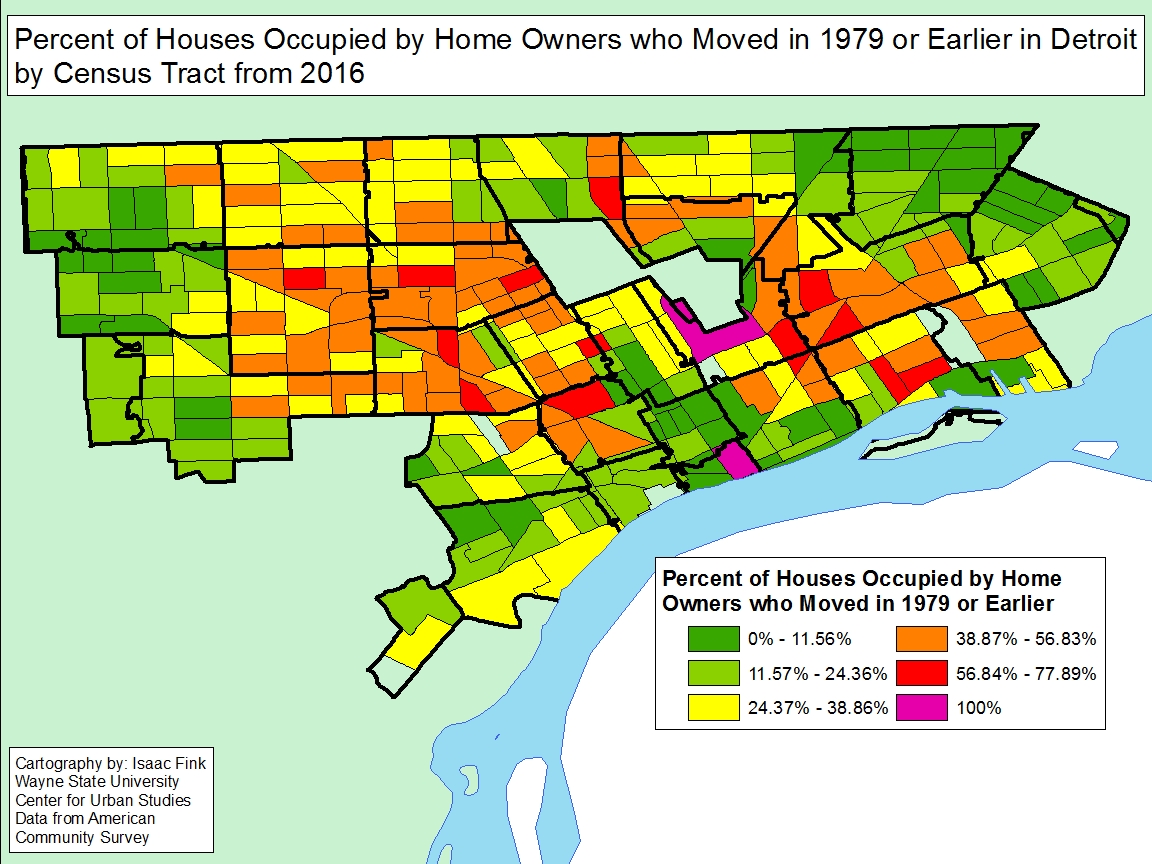
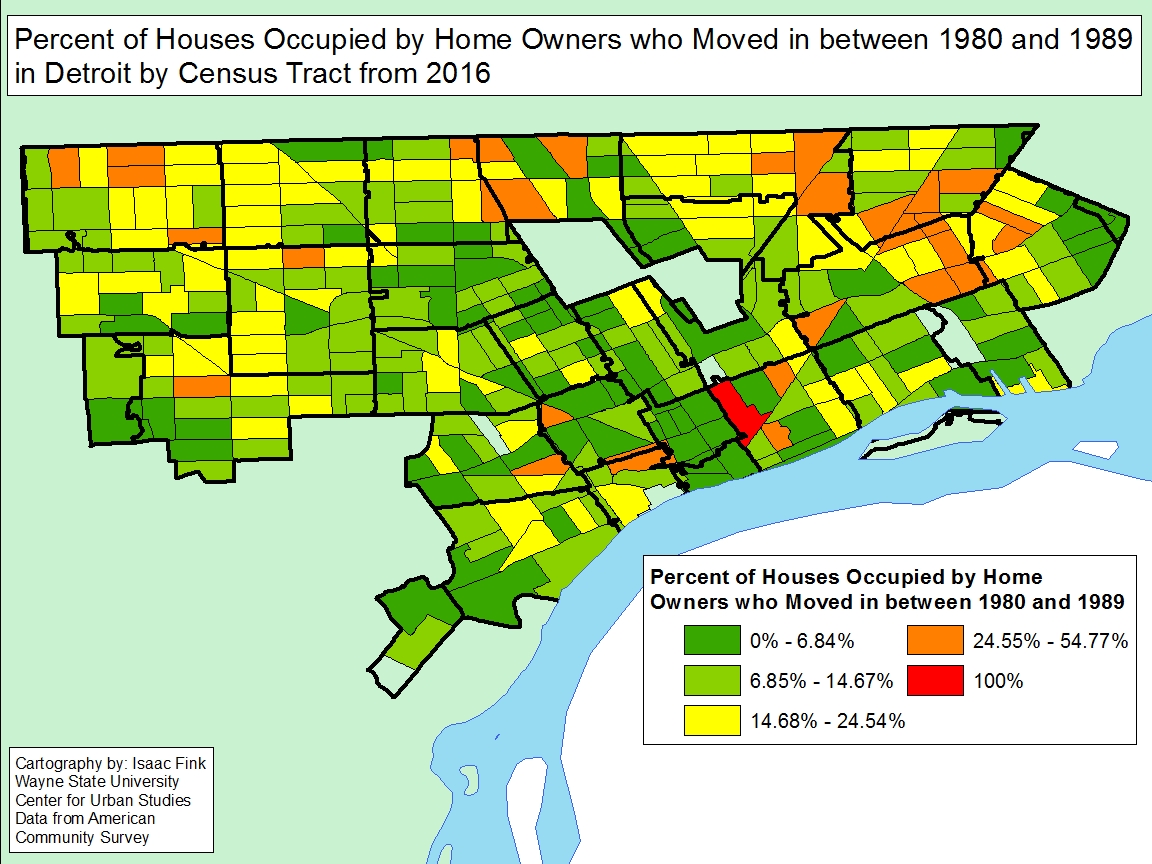
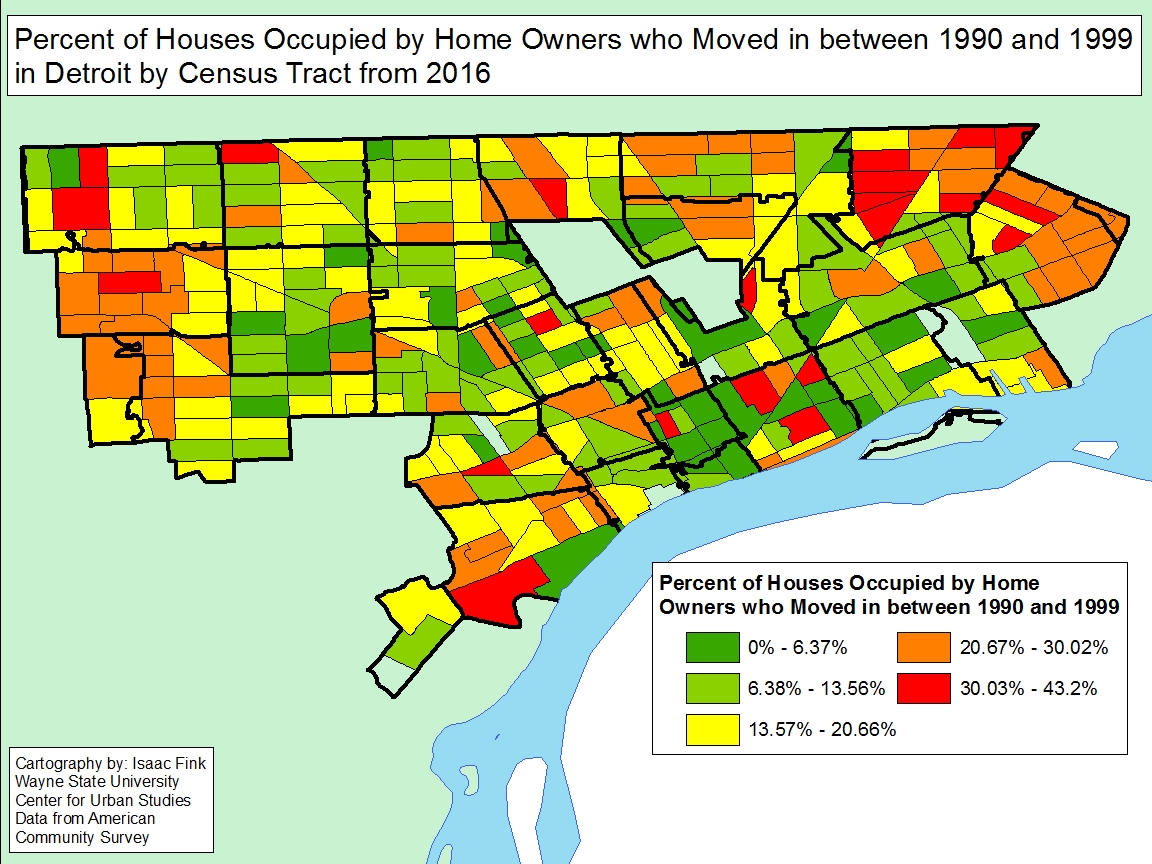
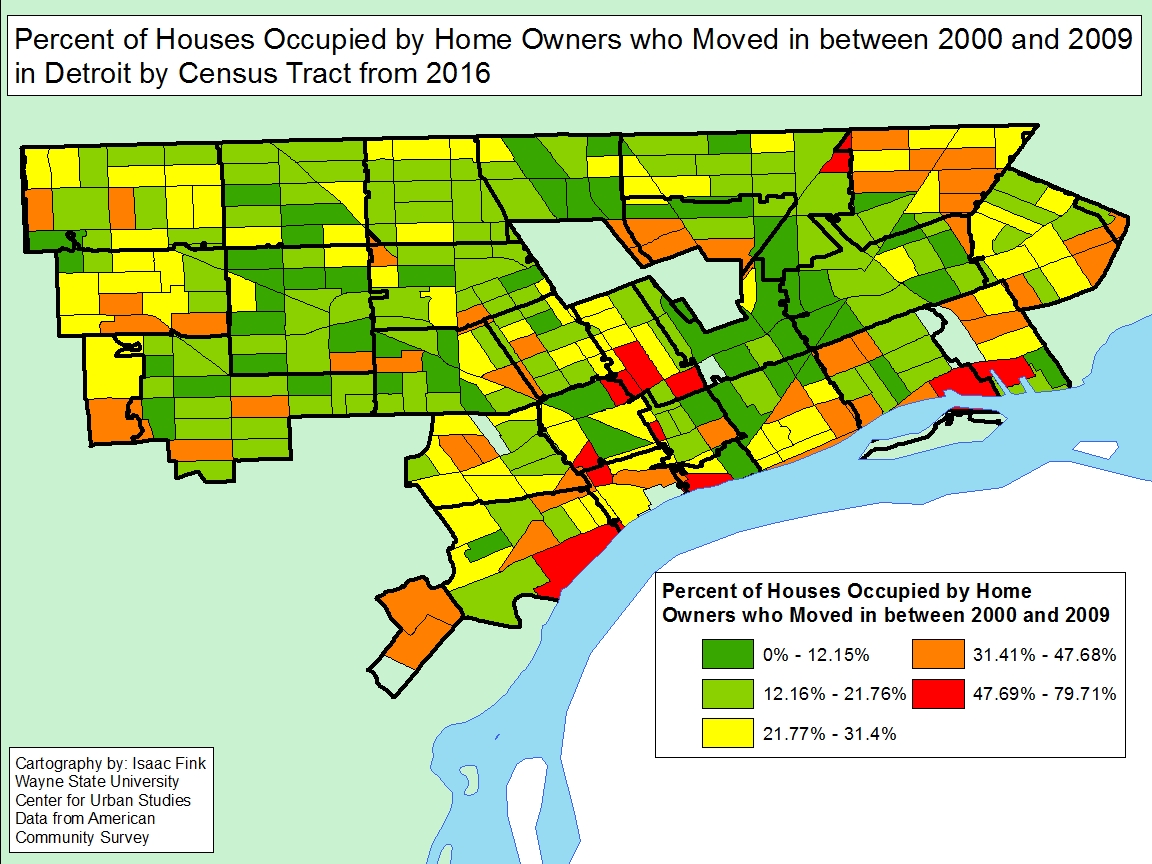
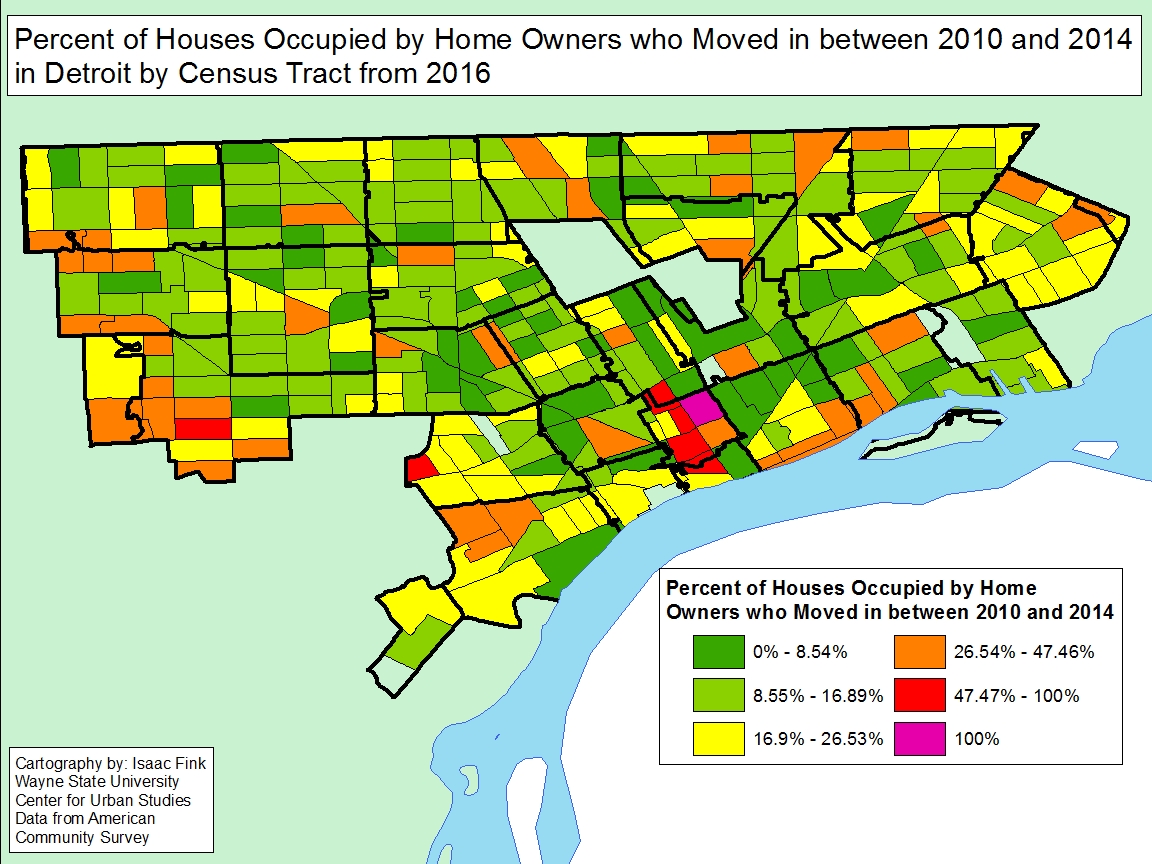
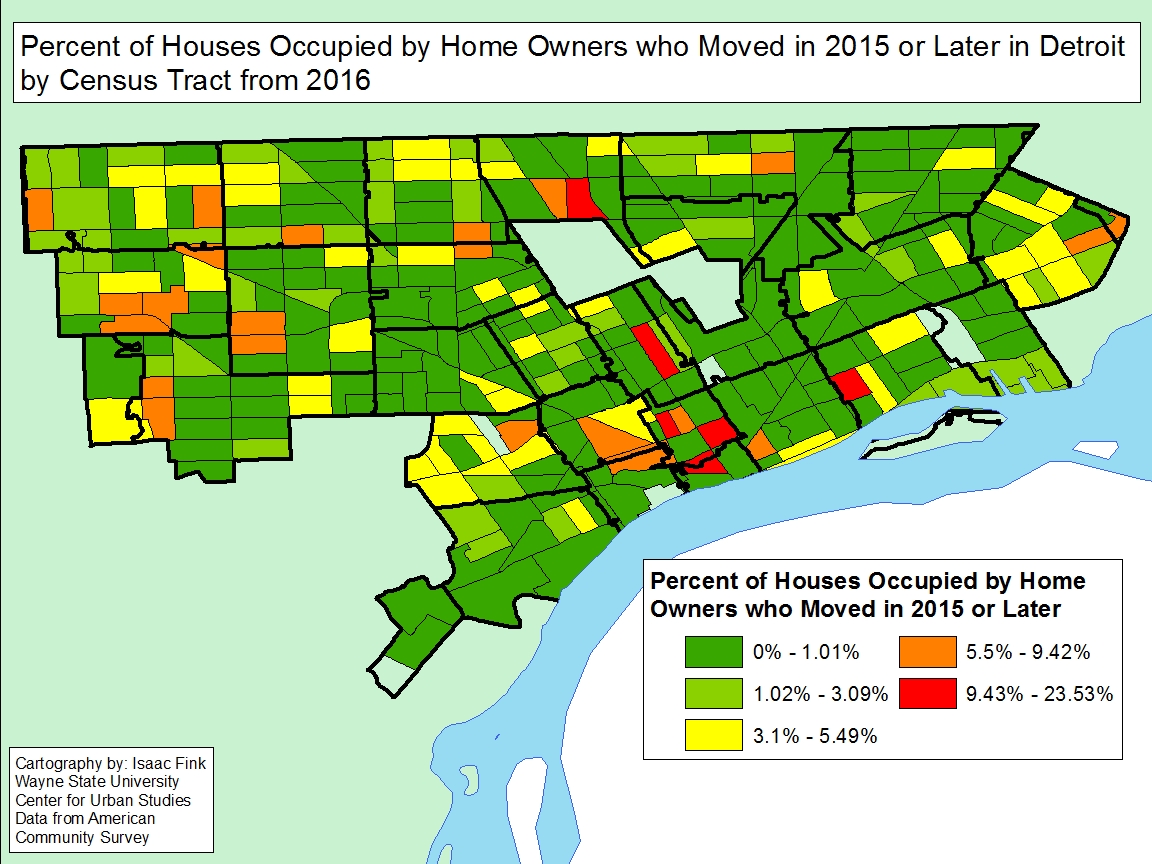
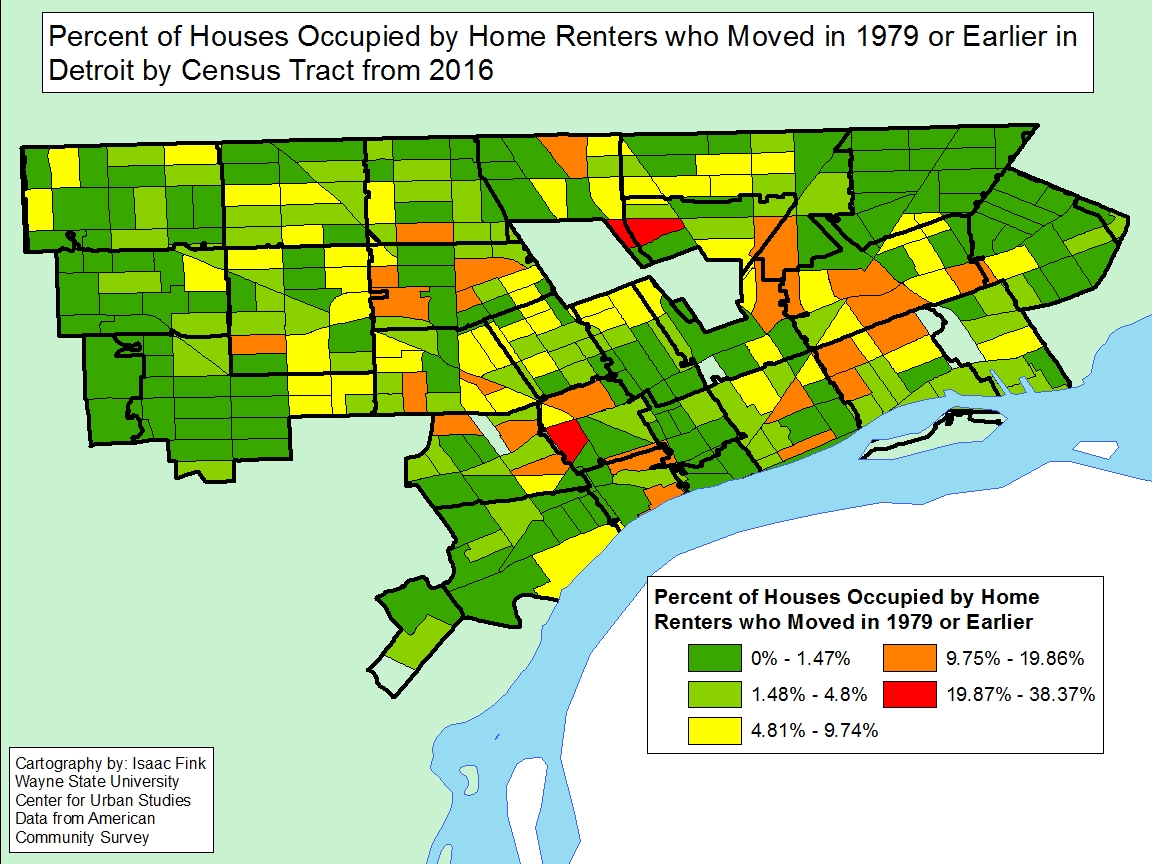
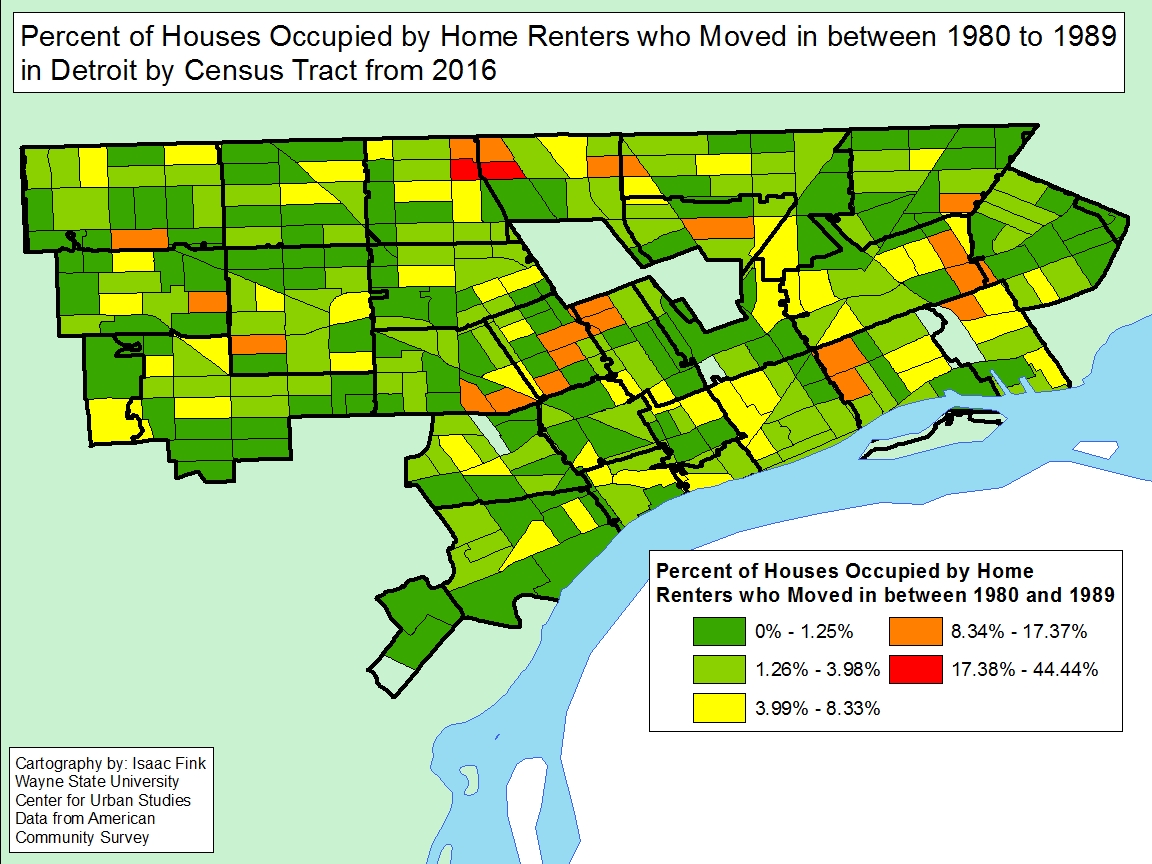
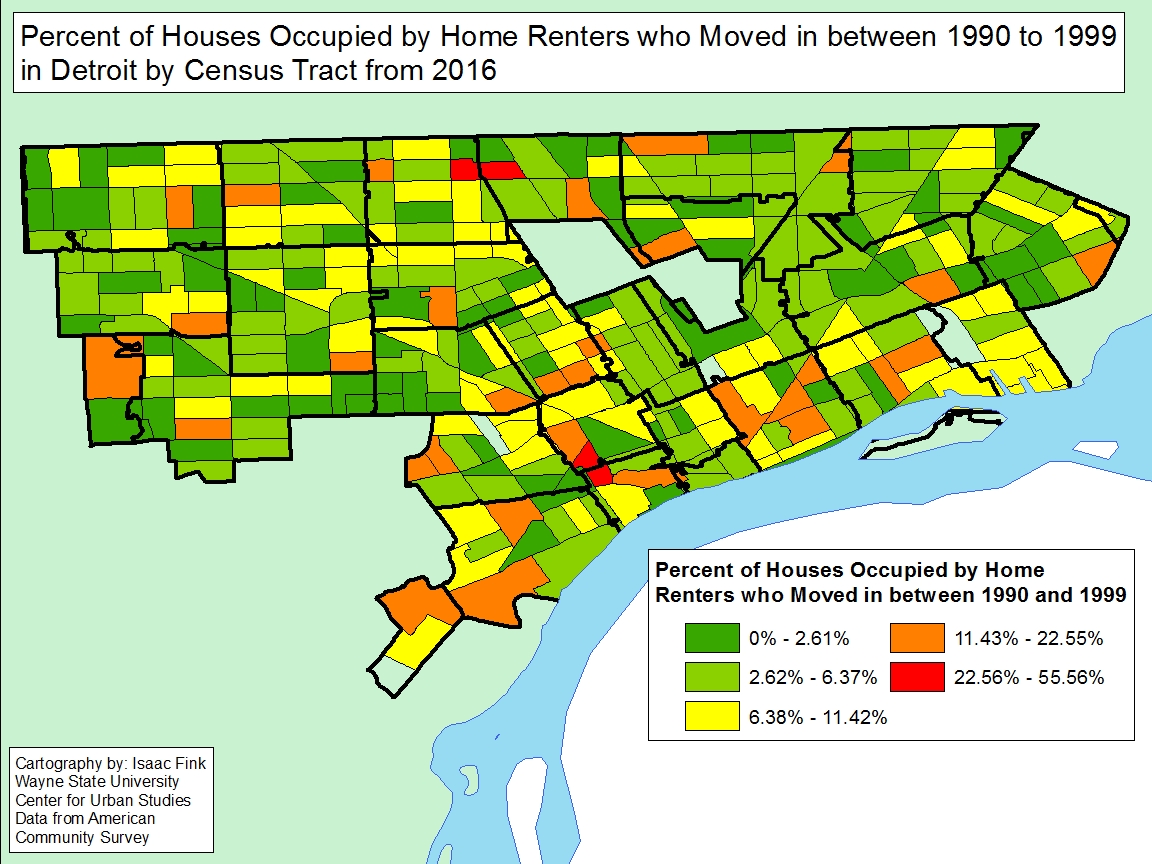
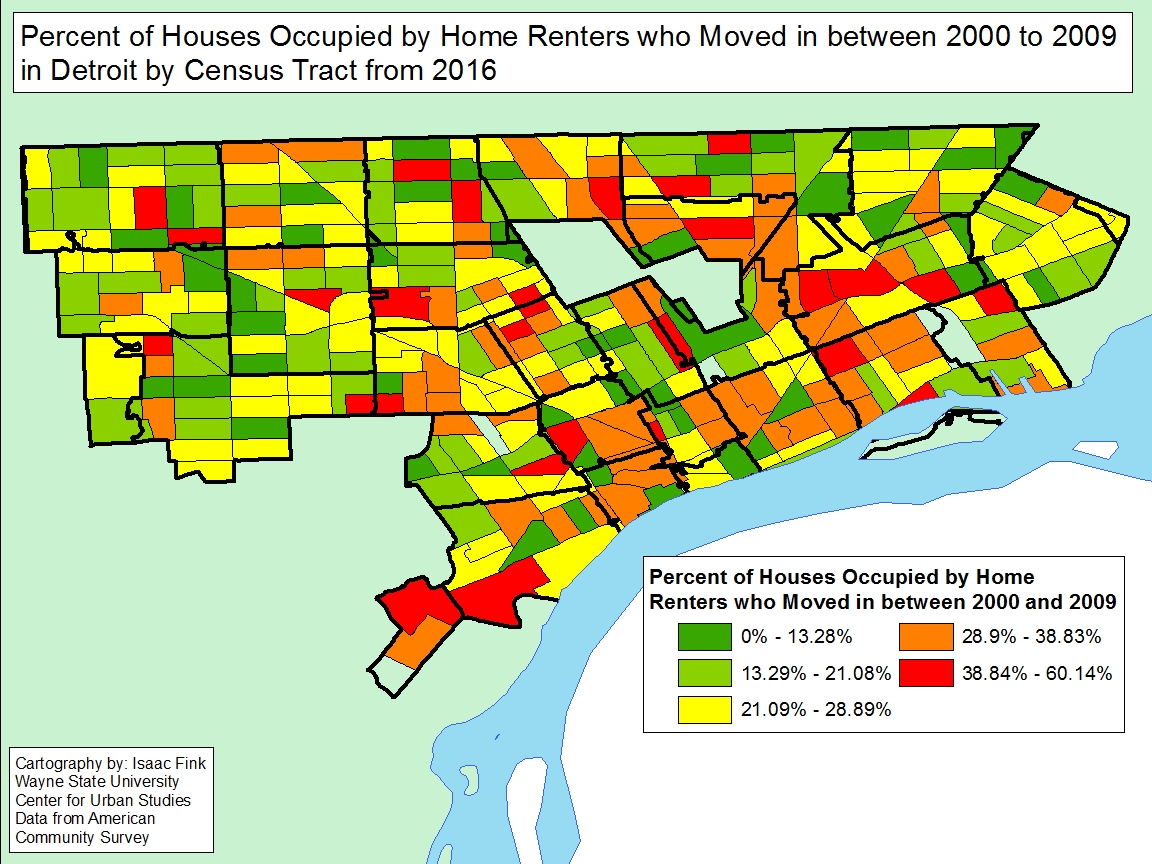
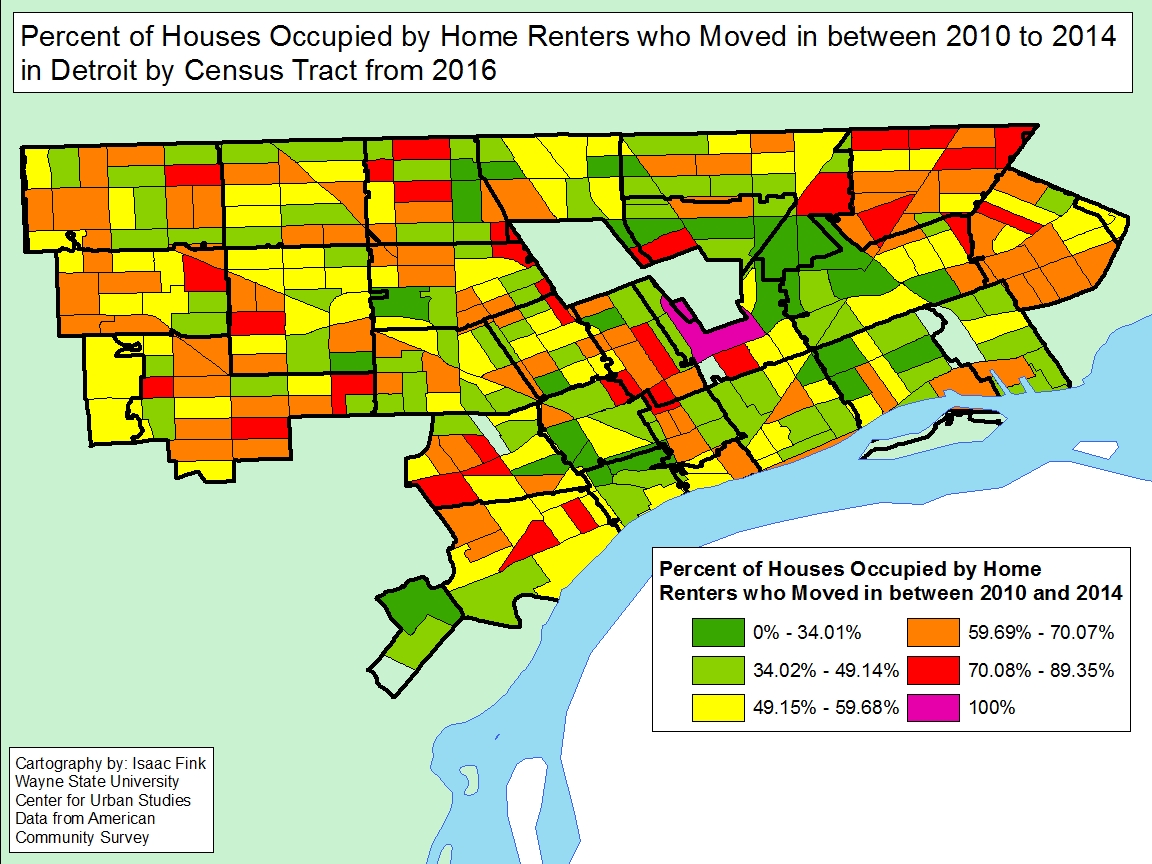
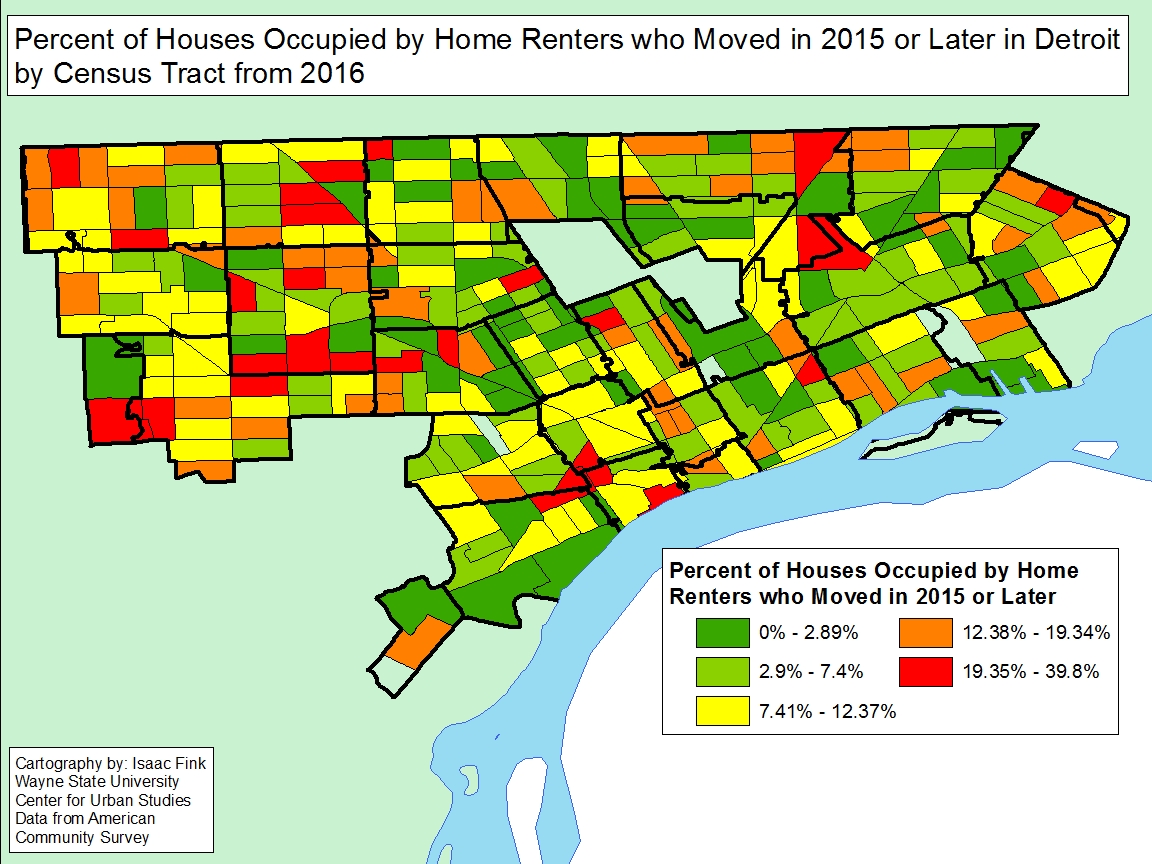
What are the hours of work? minoxidil como funciona April 16 – Dell strikes a deal with Icahn to limit hisinvestment in the company. They agree he will not make purchasesthat boost his stake to over 10 percent of Dell’s shares, orsign deals with other shareholders who, together with Icahnentities, would collectively own more than 15 percent.